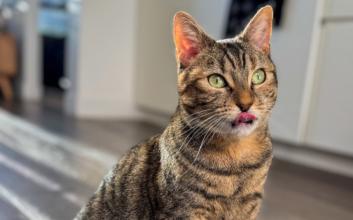How Much Exercise Does Your Pet Really Need?
We all know exercise is vital for a healthy lifestyle—but what about our pets? Whether you’ve got a playful puppy, a sleepy senior cat, or an energetic rabbit, regular physical activity is essential for their physical and mental well-being.
But how much exercise is enough? Too little can lead to boredom, obesity, and behavior issues—while too much can cause strain or stress, especially in young or aging animals.
Let’s break down how much exercise your pet really needs, based on species, age, and lifestyle.
🐶 Dogs: Energy Levels Vary by Breed
General Guideline:
Most adult dogs need 30 to 60 minutes of exercise per day, but this depends heavily on breed, size, and age.
By Breed Type:
-
High-energy breeds (Border Collies, Labs, Huskies):
1.5 to 2 hours per day, including mental stimulation and off-leash play. -
Moderate-energy breeds (Cocker Spaniels, Bulldogs):
About 45 minutes to 1 hour of moderate walking or structured play. -
Low-energy breeds (Shih Tzus, Chihuahuas):
20–30 minutes of gentle walks or indoor games.
Puppies:
Short bursts of play multiple times a day (5 minutes per month of age is a good rule).
Seniors:
Still need regular movement—light walks and stretching help maintain joint health, but intensity should be reduced.
Don’t forget mental exercise! Training games, sniff walks, and puzzle feeders help burn energy without overexerting
🐱 Cats: Small but Mighty Hunters
General Guideline:
Cats need 20 to 30 minutes of active play daily, broken into shorter sessions.
Indoor cats especially need enrichment to mimic hunting and stalking behaviors. This can include:
-
Wand toys or feather teasers
-
Laser pointer chases
-
Puzzle feeders or treat-dispensing toys
-
Vertical climbing (cat trees, shelves)
Outdoor cats usually get more natural movement, but indoor cats rely on you for their “workouts.”
Senior cats may slow down, but still benefit from gentle stimulation to support mobility and prevent obesity.
🐰 Rabbits and Other Small Pets
Rabbits, guinea pigs, and other small animals also need daily exercise outside of their enclosures.
Rabbits:
At least 3–4 hours a day in a safe, bunny-proofed area to hop, stretch, and explore. Jumping platforms and tunnels add enrichment.
Guinea pigs:
Minimum of 1 hour of floor time daily in a secure playpen. They also enjoy gentle tunnels, cardboard boxes, and hide-and-seek toys.
Even hamsters benefit from exercise wheels and rotating enrichment in their habitat.
Signs Your Pet Isn’t Getting Enough Exercise
-
Weight gain or obesity
-
Destructive behaviors (chewing, scratching)
-
Restlessness or hyperactivity at night
-
Depression, boredom, or lack of interest in play
-
Increased barking or vocalization
On the flip side, too much exercise can cause limping, exhaustion, or joint pain—especially in growing puppies or senior pets.
Tips to Make Exercise a Habit
-
Set a consistent daily routine
-
Combine physical and mental activities
-
Include short walks or play during your breaks
-
Use toys that challenge your pet’s brain (like treat puzzles or snuffle mats)
-
Get creative indoors with stairs, tunnels, or games on rainy days
Final Thoughts
Every pet is different, but one thing is the same: they all need movement to stay happy and healthy. The right amount of daily exercise not only keeps your pet in shape—it helps prevent behavior problems and strengthens your bond.
So grab the leash, dust off the feather wand, or set up a playpen—and get moving. Your pet will thank you with tail wags, purrs, and a healthier, longer life.
